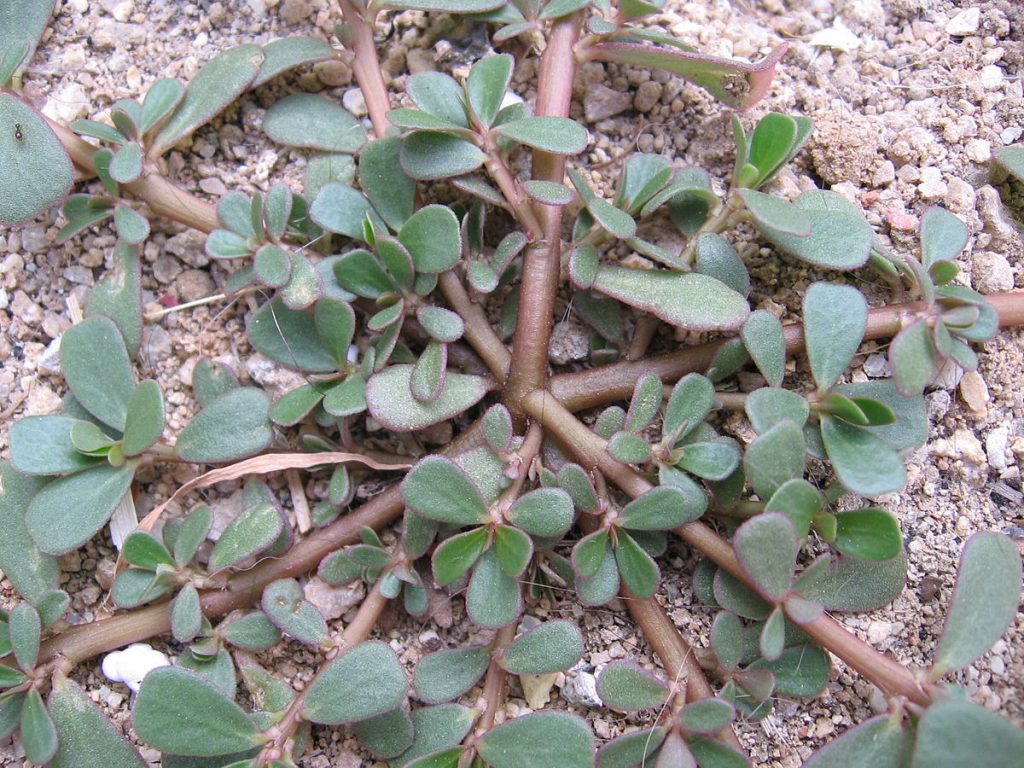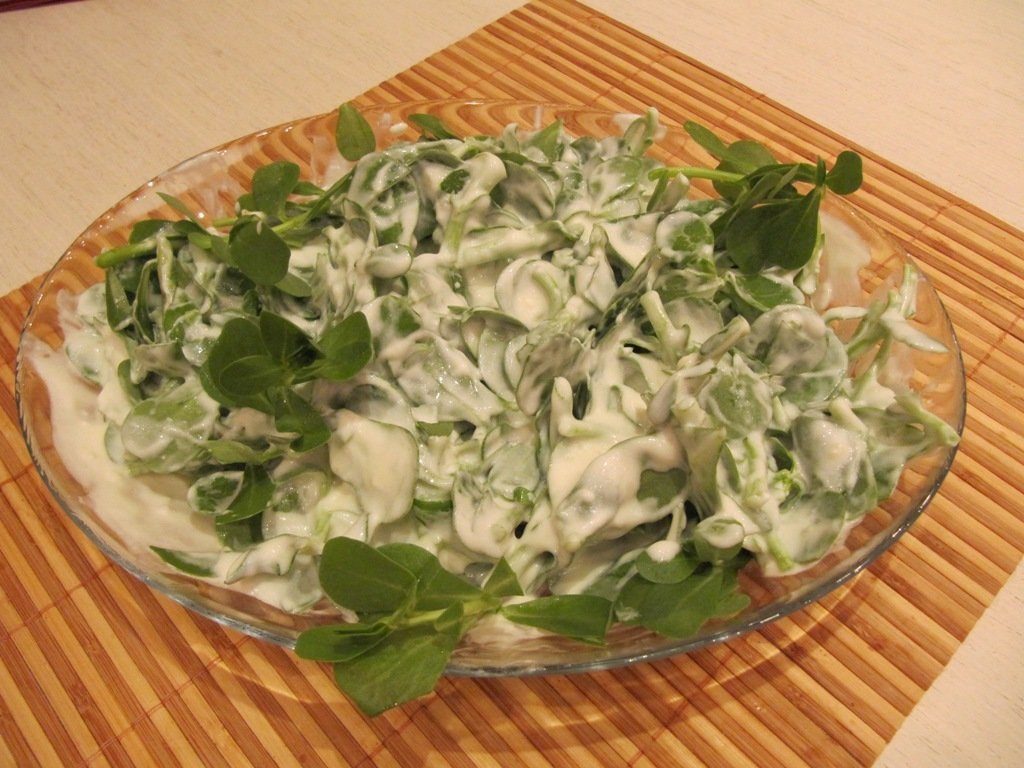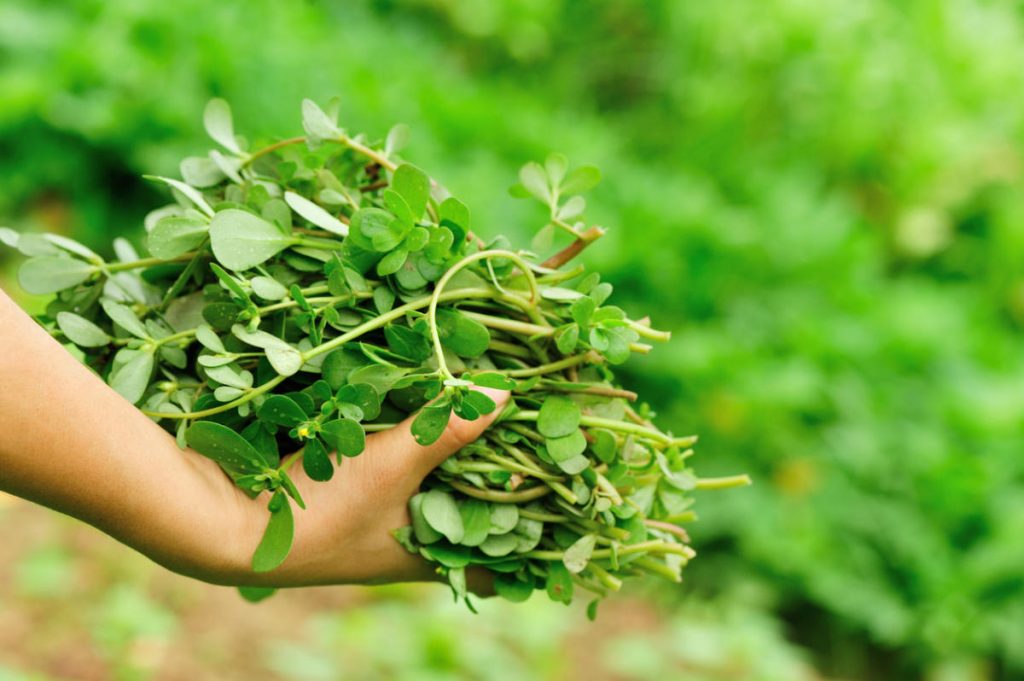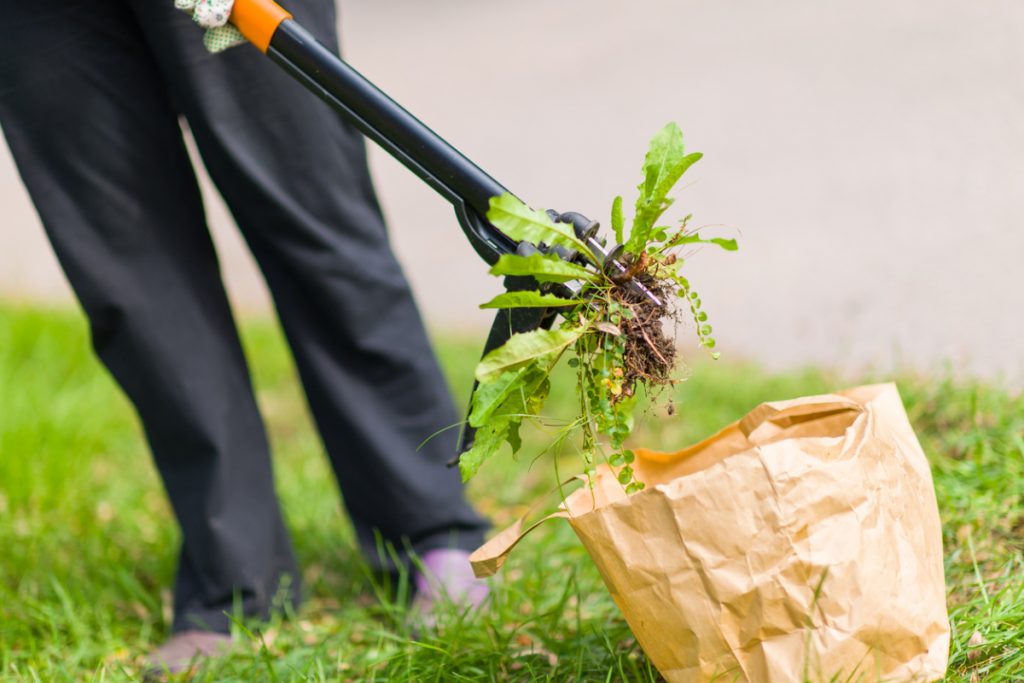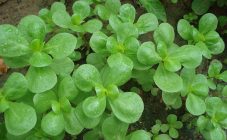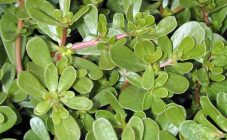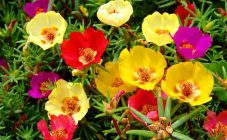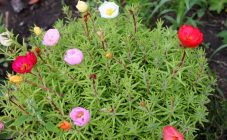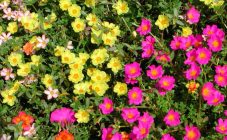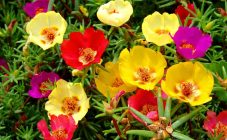Content:
Purslane (dandur) is used in culinary and pharmaceutical industries. Asians use young purslane sprouts and leaves for cooking. The plant has a second name - dandur. Its aroma has an inherent spice that goes well with meat dishes, stews and soups. Also, young shoots lend themselves well to pickling. Fresh purslane and vegetable salads are especially popular. The plant contains carotene and ascorbic acid. However, in the southern territories, purslane brings a lot of inconvenience to gardeners. Despite the large number of positive characteristics, everyone wants to get rid of this weed, as it grows at a fast pace.
Description of the plant
There are two types of purslane: wild and cultivated. The gardeners nicknamed the wild variety, which brings a lot of worries, the chicken leg.
Expanding, the plant becomes like a laid carpet. The plant is able to grow in poor soils, the main requirement is a lot of sunlight.
This is an annual plant, does not tolerate frost. Propagated by seeds, vegetatively. What does a purslane look like? The plant has thick stems and a strong root system. The height of the stem can reach 20 cm. The length of the shoots reaches 45 cm. The stems are highly branched, the leaves are wedge-shaped, the flowers are bisexual, the color is yellow. The root is characterized by weak branching. The plant has box-shaped fruits containing small seeds. After ripening, these fruits dry out, crack, spreading the seeds two meters around them.
Useful properties of purslane
The stems and seeds of purslane have medicinal properties, the plant is listed in the reference books of medicinal herbs. Contains ascorbic and nicotinic acids. The first acid helps to strengthen the immune system, the second regulates metabolic processes in the body. Purslane also has antimicrobial, anti-inflammatory, antihelminthic, diuretic and regenerative effects.
Purslane has proven itself well in the field of cosmetology. It contains a large amount of vitamin A, minerals and trace elements. This beneficial complex helps with problem skin. Purslane is added by cosmetologists to various masks that have a smoothing effect. It also stimulates healing. The sap of this weed relieves inflammation from bee stings, mosquitoes and even poisonous snakes.
Inappropriate use can harm the body. Eating the plant for food is not recommended during pregnancy and lactation. Use is contraindicated in the presence of bradycardia, hypertension, nervous tension. Purslane stimulates an increase in insulin and can cause an attack of hypoglycemia. When using the plant for medicinal purposes, all restrictions should be considered.
Ways to deal with purslane in the garden
The weed blooms with the onset of summer and continues to bloom until early autumn.Its small yellow flowers contain almost 3 thousand seeds. They remain viable for up to 10 years, so getting rid of the plant is not so easy.
Like any other weed, purslane emerges after the air temperature rises to 25 degrees, after rains or watering. Has the ability to develop immunity to used herbicides and chemicals. Therefore, it is important not to delay the harvesting of the purslane in order to prevent its flowering and overgrowth. The plant can emerge up to 4 times per season.
How to get rid of purslane in the garden forever? There are two ways:
- Mechanical.
- Chemical.
How to get rid of purslane weed mechanically
Weeding, mulching and deep digging of the garden should be carried out regularly. The method involves manual weed removal. Using tools such as a garden herringbone will not produce the desired results, but will only make the situation worse. The plant has a strong branched root system. Fragile shoots are easily pulled out of the moistened soil. If only the purslane sprout is pulled out, the injured root will accelerate its growth to recuperate. This will lead to weed overgrowth.
Mulching is considered one of the great ways to remove annoying weeds. Organic and other materials are used as mulch.
Organic mulch:
- Sawdust.
- Wooden bark.
- Leaves.
- Mown grass.
Inorganic Mulching Materials:
- Pebbles.
- Gravel.
- Black agrofilm.
Organic mulch is inferior to inorganic mulch, it attracts pests such as slugs.
In addition to protecting against various weeds, mulching helps the soil to maintain looseness and moisture for a longer time. Mulch also helps the soil keep warm and keeps it from overheating.
How mulching works: bacteria develop under cover that kill purslane. For each weed, you can choose a different type of covering material. Purslane is badly affected by hay and straw mulch.
To maintain cleanliness in the garden, a deep digging procedure should be carried out twice a year: before and after winter. After digging, it is imperative to cultivate the soil.
Chemical method
It happens that the weed on the site is so rooted that mechanical methods do not help. For chemical treatment, herbicides are used that have a continuous effect. This treatment is best done after the autumn harvest.
For purslane, a mixture of two drugs is used: Roundup + Pyramine, Octigen or Lazurite. The preparations should be diluted without deviating from the instructions.
The active substances of the biological product are deposited on the leaves of plants and penetrate into its tissues. Use only clean water. The presence of impurities in the water in the form of clay or silt will reduce the effectiveness of the solution. You should also consider the hardness of the water. With a high stiffness index, the dosage of the biological product is increased, but at the same time the consumption of the solution is reduced. For hand sprayers, the solution rate is 300-500 liters per hectare.
The drug Pyramine contains the active substance chloridazone. The consumption rate is 2-3 liters per hectare. The herbicide Lazurit is made on the basis of metribuzin. Up to 1.5 kg of the drug is consumed per hectare.Octigen - 2,4-dichlorophenoxy-acetic acid and chlorsulfuron - use 200-300 liters per hectare.
Spraying purslane is carried out on a sunny day. In cases of precipitation within 10 hours after treatment, the procedure is repeated.
With the correct destruction of the weed with herbicides, after 14 days, the plant will wither and die. The weed can also be removed in the summer at high temperatures. In these cases, chemicals should be handled carefully. It is important not to get to the cultivated plantings, otherwise they will die along with the weeds.
Useful tips for gardeners
Having found a garden purslane on the site, how to get a dangerous weed out of the garden should be decided as soon as possible. You can take preventive measures: a few weeks before planting seedlings or planting seeds, prepare beds that are shed with water. Thus, an imitation of planting occurs. After a few days, purslane will rise in a moistened place, the weed should be constantly removed as it appears. Thus, almost all the seeds will sprout and the soil will be cleared.
Some gardeners advise the following procedure for getting rid of purslane: first, the plant is pulled out along with the root. Then they are collected uphill and treated with Tornado and Napalm preparations. They can also cultivate the land. The disadvantage of this method is that a large amount of seeds remains in the soil. They can emerge after watering or rainfall.
After applying the Tornado, sowing of any crop is possible. The working solution is prepared in 1-3% concentration before spraying. They are processed in the morning or evening in the absence of wind. Do not carry out the procedure before precipitation. 3 liters of solution are consumed per 100 square meters. The solution cannot be stored ready-made. The herbicide Napalm has a wide spectrum of action; it is used to kill sow thistle, horsetail and creeping wheat grass. After spring treatment, the preparation protects against the appearance of annual weeds. Autumn treatment will prevent the growth of perennial grass. This ability is achieved due to the large amount of glyphosate potassium salt. The optimal concentration in the solution is 550 grams per 1 liter. This formulation is useful for spotting small amounts of weeds.
If, when planting onions or carrots, the herb purslane is worried, how to deal with it? One of the proven drugs is Stomp. Due to the slow germination of carrot seeds, small sprouts of purslane can fill the garden bed. It is quite difficult to pull them out, since small carrot sprouts can be damaged. The drug is used after the carrots have sprouted. Its action is possible in bright sun and precipitation. Rains intensify Stomp's actions. The drug is slightly toxic, but personal protective equipment should be used when working with it. The consumption of the drug is from 3 to 6 liters per hectare 1.5 months before the harvest.
If you tortured purslane when planting potatoes, you can use Zenkor, it will kill weeds without harming the potato plantings. Several treatments are carried out. The first one - a couple of days before the potato sprouts appeared. When processing, the type of soil is taken into account: 0.6 liters per hectare are used for chernozems, 0.75 liters are used for podzolic soils, and 1.2 liters for clay soils. The activity increases if precipitation falls several hours before the treatment. Zenkor forms a small film coat on the soil that prevents weeds from germinating.
Having figured out how to get purslane out of the garden forever, it is important to keep the soil clean with preventive measures. You can use agrofilm, such a shelter does not allow weeds to multiply.Under the influence of high summer temperatures, seeds located on the soil surface are burned under the agrofilm. Such a measure will save the site from the appearance of purslane sprouts for the next year.
Possessing many useful properties, purslane is considered a weed. It gives gardeners a lot of trouble, because it grows in a solid carpet that interferes with cultivated plants. To combat it, mechanical and chemical agents are used. Experienced gardeners try to use less chemistry. They pay attention to the search for new methods to help get rid of purslane. The most acceptable way to get rid of weeds is by manual removal. The use of garden tools can damage purslane sprouts, which tend to take root from parts of the stem and leaves. Purslane seeds are highly germinating for a long time. In the fight against the plant, autumn soil treatment with herbicides or covering the beds with black agrofilm will help.
